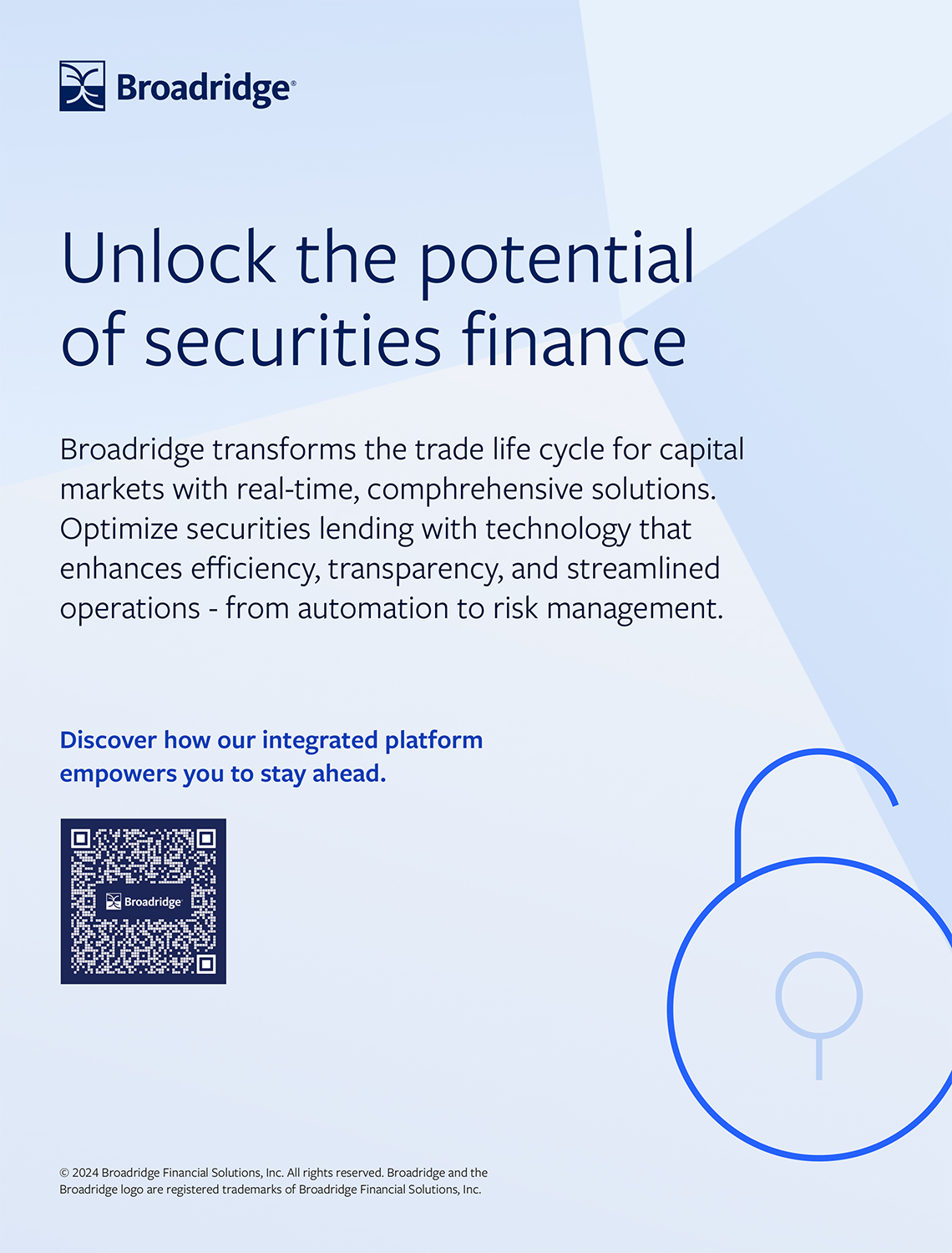SFTS2019: DLT won’t solve all post-trade problems
13 May 2019 London
 Image: Shutterstock
Image: Shutterstock
Distributed ledger technology (DLT) may solve individual problems in post-trade, but it won’t replace all current systems in the medium term, according to Rob Frost, global head of product development, Pirum Systems, speaking at the Securities Finance Technology Symposium in London.
Frost indicated that DLT cannot survive on its own and will need to connect with existing systems, especially when concerning the navigation of regulations such as the Central Securities Depositories Regulation (CSDR) and Securities Financing Transactions Regulation (SFTR).
The moderator, Dan Barnes, editor of The Desk, went on to ask the panellist who would drive the adoption of DLT and similar technologies.
Laurence Marshall, COO at EquiLend, suggested that the adoption of technology is better today than it has been for the last few years.
Marshall said: “With new technology coming out all the time, and more and more data becoming available, there is an important requirement to look at different infrastructures.”
Frost explained that new technologies can offer a lot to help avoid fines and solve regulatory reporting issues.
He said: “There was a struggle to get adoption of technology in post-trade in the past, but now the back office and front office’s obligations are converging, that is what we are seeing at Pirum, anyway.”
Marshall cited it was important to understand that “answers are not always found in technology”.
He highlighted: “The marketplace is becoming more complex and difficult with a wider variety of solutions available within post-trade, whether it’s to help with structures or digitalisation. But things are never as quick as you would like them to be.”
Barnes then went on to ask the panellists what were the main pressures that the post-trade sphere was facing in terms of technology.
Dave Grace, head of post-trade for the UK at Capco, said that CSDR will help “harmonise and standardise market practices, while it has already allowed T2S to survive and thrive.”
Grace explained: “The more the European Union regulations such as EMIR and CSDR foster a competitive environment, the more competitors there will be entering the game.”
He added: “In terms of technology, there will come a point where legacy technology will become horrifically old and unmanageable. Firms will have to decide if they want to continue spending money maintaining them. There are currently a lot of legacy systems holding back-offices together across the industry.”
Grace cited that regulation should be used as a catalyst for business model and technology change, specifically regulations such as SFTR and CSDR.
When asked what they would advise firms to prioritise in preparation for the growth of technology, panellists suggested treating coming regulations like CSDR and SFTR as an obligation to duplicate industry requirements.
Frost suggested to leverage connectivity and projects that are already underway, as well as to participate in working groups and make sure that all teams across post-trade lifecycle are aware of the tools that are available to them.
Frost indicated that DLT cannot survive on its own and will need to connect with existing systems, especially when concerning the navigation of regulations such as the Central Securities Depositories Regulation (CSDR) and Securities Financing Transactions Regulation (SFTR).
The moderator, Dan Barnes, editor of The Desk, went on to ask the panellist who would drive the adoption of DLT and similar technologies.
Laurence Marshall, COO at EquiLend, suggested that the adoption of technology is better today than it has been for the last few years.
Marshall said: “With new technology coming out all the time, and more and more data becoming available, there is an important requirement to look at different infrastructures.”
Frost explained that new technologies can offer a lot to help avoid fines and solve regulatory reporting issues.
He said: “There was a struggle to get adoption of technology in post-trade in the past, but now the back office and front office’s obligations are converging, that is what we are seeing at Pirum, anyway.”
Marshall cited it was important to understand that “answers are not always found in technology”.
He highlighted: “The marketplace is becoming more complex and difficult with a wider variety of solutions available within post-trade, whether it’s to help with structures or digitalisation. But things are never as quick as you would like them to be.”
Barnes then went on to ask the panellists what were the main pressures that the post-trade sphere was facing in terms of technology.
Dave Grace, head of post-trade for the UK at Capco, said that CSDR will help “harmonise and standardise market practices, while it has already allowed T2S to survive and thrive.”
Grace explained: “The more the European Union regulations such as EMIR and CSDR foster a competitive environment, the more competitors there will be entering the game.”
He added: “In terms of technology, there will come a point where legacy technology will become horrifically old and unmanageable. Firms will have to decide if they want to continue spending money maintaining them. There are currently a lot of legacy systems holding back-offices together across the industry.”
Grace cited that regulation should be used as a catalyst for business model and technology change, specifically regulations such as SFTR and CSDR.
When asked what they would advise firms to prioritise in preparation for the growth of technology, panellists suggested treating coming regulations like CSDR and SFTR as an obligation to duplicate industry requirements.
Frost suggested to leverage connectivity and projects that are already underway, as well as to participate in working groups and make sure that all teams across post-trade lifecycle are aware of the tools that are available to them.
NO FEE, NO RISK
100% ON RETURNS If you invest in only one securities finance news source this year, make sure it is your free subscription to Securities Finance Times
100% ON RETURNS If you invest in only one securities finance news source this year, make sure it is your free subscription to Securities Finance Times



